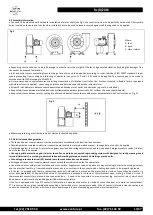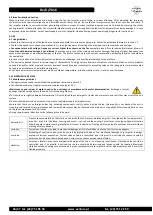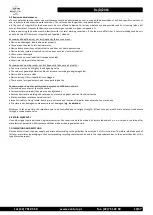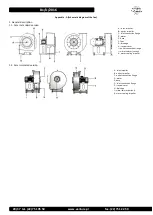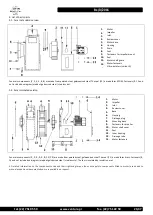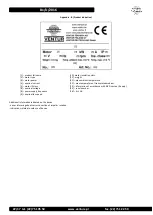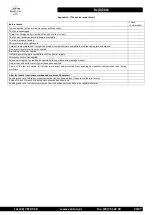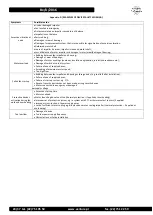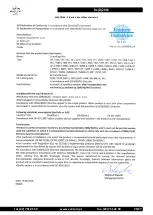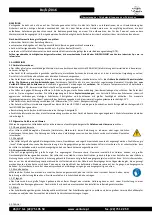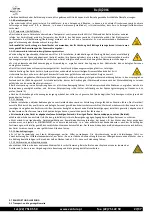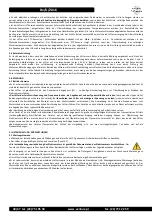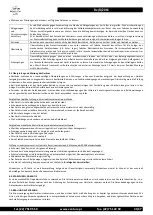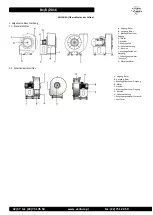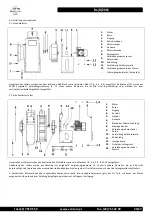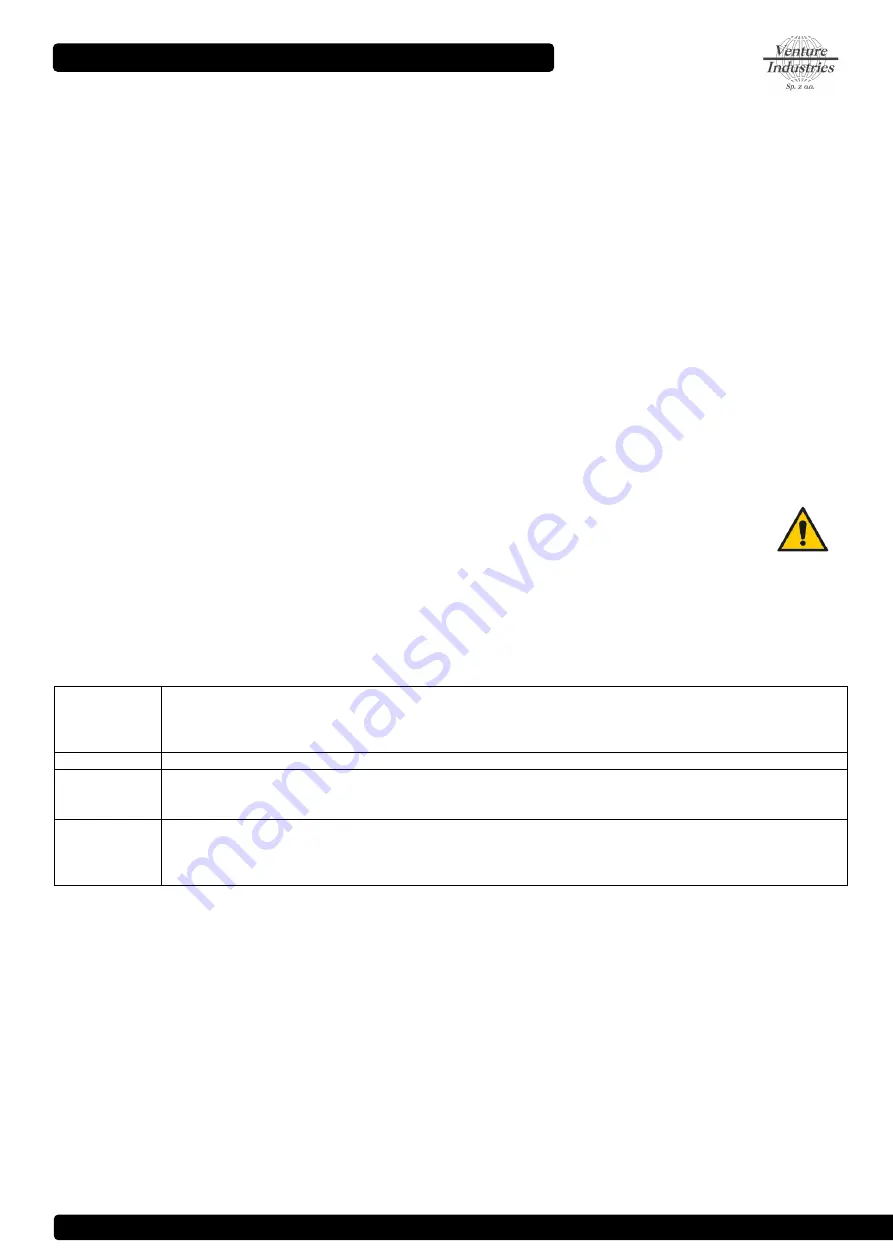
Bx/U/2016
18/37 tel. (22) 751 95 50
www.venture.pl
fax. (22) 751 22 59
3.4 Impeller rotation direction
Make sure that after installation and during using the fan the impeller would rotate in correct direction. After mounting fan to proper
construction, with special care taken and in accordance with sector 1 and 4, launch the fan in impulse way (less than 1 second) and check, if
the impeller rotates in correct direction, generating airflow in proper direction (rotation direction may be checked by checking the motor
cooling impeller rotation direction). The work with impeller rotating in the wrong direction reduces fan parameters and may damage it. In case
of improper impeller rotation, turn of power supply, wait until impeller stops and swap proper power supplying wires in junction box.
4. USE
4.1 Use guidelines
Make sure that turning on of the fan does not make any hazard for personnel and property. Follow the guidelines featured in section 1.2.
The fan is designed for continuous operations (S1) – too high frequency of starting a fan may lead to motor overheat and damage.
Fan cannot work with voltage, frequency, current higher than shown on the fan
nameplate (even if motor nameplate/manual allows it).
Use of fan with lowered voltage is not allowed
(it may cause e.g. lack of fan start-up and motor damage). Applying of higher frequency may
cause motor damage or mechanical damage of the fan. The device cannot work with current consumption exceeding the value indicated on
the nameplate.
In case of activation of any electrical protection, detection of damage, unit must by immediately turn out off use.
The device is adapted to work in certain range of characteristic. Too high volume flow rate of medium, start/work of device with completely
opened inlet and/or outlet may lead to motor overheat caused by current consumption exceeding value on the rating plate (current consumed
by fan grows as resistance of installation decreases)
Units work parameters (temperature of medium, ambient temperature, min and max flow rate....) refer to nominal speed.
5. MAINTENANCE, REVIEW
5.1 Maintenance guidelines
During maintenance and review follow the guidelines contained in point 1.2
Fan should be subject of regular review and maintenance (point 5.2).
Maintenance and review of motor need to be overtaken in accordance with motor documentation.
Exchange of motor
bearings should be made before the end of current bearing lifetime.
To clean fan use slightly damp delicate material. It is prohibited to use detergents, liquids under pressure and tools that may scratch the unit
surface.
The fan should be turned on at least once a month (minimum couple of impeller turns)
Ensure that there are no foreign bodies (e.g. assembly components, tools) near and inside the fan, the impeller is not blocked, the unit is
clean, dry and secured after maintenance and review. Water excess may be removed with drain valve (if applied). After cleaning finishes, turn
on the fan at max speed for 30 minutes.
During review special attention to the following should be paid:
dust and dirt
Prevent the accumulation of dust/dirt on and inside the fan. Dirt accumulated on: grids – may reduce the fan parameters;
impeller – may lose it balance; housing and motor – can reduce the cooling; hot surfaces –may ignite. Special attention
should be paid to motor cooling impeller and its cover. Reduction of cooling ability may lead to overheat of motor without
working of safety devices.
corrosion
Corrosion of the fan may lead to mechanical damage of it. It is forbidden to use the fan if corrosion appears
overload
Exceeding of nominal current may be caused by improper choice of fan, mechanical damage (e.g. impeller, bearing),
improper electrical connection. Current value should be controlled, and if its growth is noticed, the reason should be
determined and device should be repaired. Current value cannot exceed nominal value.
vibration
Excessive vibration may cause mechanical damage of the fan or in mounting construction. Vibration value should be
controlled, and if its growth is noticed, the reason should be determined and device should be repaired. Maximum
vibration value on bearing cannot exceed 2,8 mm/s (perpendicularly to impeller axis) for rigid assembly and 3,5 mm/s for
flexible assembly.














